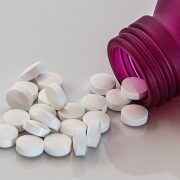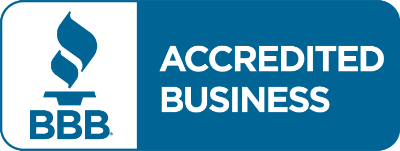What is Low Dose Naltrexone (LDN)?
Low Dose Naltrexone (LDN) has no narcotic effect and has a chemical structure that is nearly identical to an endorphin that the body makes naturally, known as Opioid Growth Factor (OGF). Endorphins are neurotransmitters the body produces to increase feelings of pleasure and well-being, as well as reduce pain and discomfort. LDN is considered a competitive opioid receptor antagonist, meaning it binds to the OGF receptors in the body, without activating them. LDN is known to reduce pain and fight inflammation. It has been useful in treating a variety of health issues, such as cancer, chronic pain, autoimmune disorders and more. It has also been seen to increase the production of your own endorphins, helping your immune system and body combat disease and pain.
What’s the Difference Between LDN and Naltrexone?
Low Dose Naltrexone is very similar to Naltrexone itself, with the exception that LDN is administered at a 10th or less of the standard dose of Naltrexone. LDN comes in many forms, depending on the need for use, LDN is administered as a liquid, capsule, sublingual drops, eye drops, tablets, and cream and topical lotion.
Several research studies conducted on the effectiveness of LDN as a successful treatment for chronic pain have noted that administering Naltrexone at a lower dose, results in pain relief for many patients. Naltrexone at the standard dose (50mg), theoretically creates a complete blockage of the opioid systems that occur within the body naturally. As the endogenous opioid systems within the human body play a crucial role in pain management, resilience to stress and more, this would not be a desirable effect for a chronic pain patient.
There is a plethora of scientific evidence that supports the concept that low- and high-dose opioid antagonists can have very different impacts on the body. For example, morphine at the standard dose produces an analgesic effect, meaning it results in pain relief for the patient. In contrast, when Morphine is administered at 1/10th of the standard dose, it creates a hyper-analgesic effect, meaning that the patient develops increased sensitivity to pain and an extreme response to pain. Several studies have found that there is a small window where opioid pain medications produce the opposite effect than what would typically be expected.
Naltrexone has been seen to produce similar results as morphine. When Naltrexone is administered at the standard dose, 50mg, it has been proven to be very successful in substance abuse treatment. However, at the standard dose, Naltrexone does not relieve pain for chronic pain patients, rather it creates more pain due to a complete blockage of the opioid system within the body. On the other hand, LDN is administered at approximately 1/10th of the dose used for substance abuse treatment and has been noted by several studies, to greatly reduce pain for chronic pain patients.
So, What Is Naltrexone?
Naltrexone is an opioid antagonist, initially used to treat opioid addiction. Because the brain interacts similarly to alcohol as it does opioids, there has been a lot of success in treating alcohol dependency with Naltrexone.
Naltrexone works by blocking the body’s receptors that produce the “good feelings” an individual experiences when they consume alcohol. As a result, individuals taking Naltrexone no longer experience the “reward” from alcohol consumption and are in turn less likely to continue drinking. Naltrexone is a non-addictive, non-narcotic medication, meaning an individual will not develop a dependence on Naltrexone while taking it. Even if an individual were to relapse, Naltrexone prevents the individual from achieving the same feeling they were used to with prior alcohol consumption. Over time, Naltrexone helps an individual disassociate happiness and alcohol, helping them remain sober.
Naltrexone can be very beneficial in the alcohol addiction recovery process. Naltrexone is most effective when used in conjunction with a comprehensive treatment plan, such as therapy, counseling, 12-step programs and other medications.
Side Effects of LDN
Along with any medication, there can be side effects that can occur as a result of taking LDN. Some mild side effects may occur that do not require medical attention. These side effects often go away as your body adjusts to the medication. While not all of the following side effects may occur, some side effects require attention from a medical professional. If you experience any serious side effects of LDN, please check with your physician immediately.
The following side effects have been reported with use of LDN:
More Common Side Effects:
- Mild to moderate abdominal cramping or pain
- Anxiety, Nervousness, Restlessness or difficulty sleeping
- Headache
- Muscle or Joint pain
- Nausea or Vomiting
- Unusual Tiredness
Less common
- Chills
- Constipation
- Cough or Congestion
- Diarrhea
- Dizziness
- Fast or Pounding Heartbeat
- Increased Thirst
- Irritability
- Loss of appetite
- Sexual problems in males
Less common
- Skin rash
Rare
- Severe Abdominal pain
- Blurred Vision, Aching, Burning or Swollen eyes
- Chest Pain
- Confusion
- Frequent urination or discomfort while urinating
- Fever
- Hallucinations
- Itching
- Depression or other mood or mental changes
- Ringing or Buzzing in the Ears
- Shortness of Breath
- Swelling of the face, feet or lower legs
- Weight Gain
Other side effects not listed may also occur in some patients. If you notice any other side effects, check with your healthcare professional.
Can LDN Be Used for Alcoholism?
While there have been various clinical trials on the effectiveness of LDN for alcoholism, the majority of research on Naltrexone and its effectiveness in treating alcoholism has been evaluated at 50mg doses, the standard dose. That said, there is not yet sufficient evidence to conclude that LDN is effective in treating alcoholism. However, several studies have yielded promising results. A study conducted in 2011 looked at the effects of Very Low-Dose Naltrexone (VLDN) on individuals detoxing from opioids who were also heavy alcohol users. The research concluded that individuals who were taking VLDN experienced fewer withdrawal symptoms than those individuals who did not. The individuals taking VLDN were also more likely to drink less after treatment and more likely to continue with treatment after the initial detox period.
Kinkaid Private Care Coordinates Medical Detox For Alcohol and Opiates
If you or your loved one is in need of help with in-home alcohol and/or opioid detox, please reach out to us to see how we can help. Kinkaid Private Care offers premium in-home services to patients looking for the best and most intensive care on the market. We only take on a few clients at a time, so we always provide specialized care to meet the needs of each client.
For more information, please visit our homepage and learn about the array of services we provide. These services include home detox throughout California, as well as in-home nursing care and the coordination of a variety of at-home medical services in the Los Angeles area. We also offer at-home Covid-19 testing.
FAQs
What drug is commonly used to treat alcoholics?
Only three medications have been approved by the FDA for the treatment of alcohol use disorder: naltrexone, acamprosate, and disulfiram. Of these, naltrexone and acamprosate have the highest quality evidence supporting their effectiveness in decreasing alcohol consumption.
What medications stop you from drinking?
No medication is able to stop people from drinking entirely. All of the FDA-approved medications have been shown to increase abstinence rates and reduce drinking quantities, but they are not a quick-fix solution for alcohol use disorders.
What is the most effective treatment for alcohol dependence?
The first step in treating alcohol dependence is always medical detoxification. This step is necessary to ensure your safety through alcohol withdrawals, and to help you reach the next steps in recovery. After detox, the best treatment for alcohol dependence is combining medications, therapy, and support groups. Together, these treatments can have an additive effect: increasing the overall likelihood that you can remain abstinent and overcome the symptoms of alcohol use disorder.
Is Naltrexone available over the counter?
Naltrexone is not available over the counter – a prescription from a medical provider is needed.
Does naltrexone make you happy?
Most people who take naltrexone won’t be able to perceive its effects. As an opioid blocker, it can discourage addictive behaviors and reduce cravings but doesn’t provide a sense of euphoria or pleasure.
Can you take LDN long-term?
Naltrexone is safe to be taken by most patients long-term. There are no known problems associated with long-term naltrexone use.
Does LDN cause weight gain?
Weight gain is a very rare side effect of naltrexone use. Most people will not gain weight as a result of taking low-dose naltrexone.
Can LDN cause liver damage?
Naltrexone has not been definitively linked to liver damage in clinical studies. While naltrexone is processed in the liver, it is broken down into inert compounds quickly, and even high-dose naltrexone is considered relatively safe in terms of hepatoxicity. Part of the confusion about naltrexone’s effects on the liver is its use in treating people with high levels of liver disease – such as hepatitis, alcoholic fatty liver disease, or cirrhosis. Even for people who have pre-existing liver damage, naltrexone is often recommended – as continuing to drink causes more damage to the liver than taking naltrexone.
How long does it take for LDN to start working?
Naltrexone absorbs quickly into the body and starts to work within an hour. The effects of low-dose naltrexone can last for between 4 and 6 hours.













